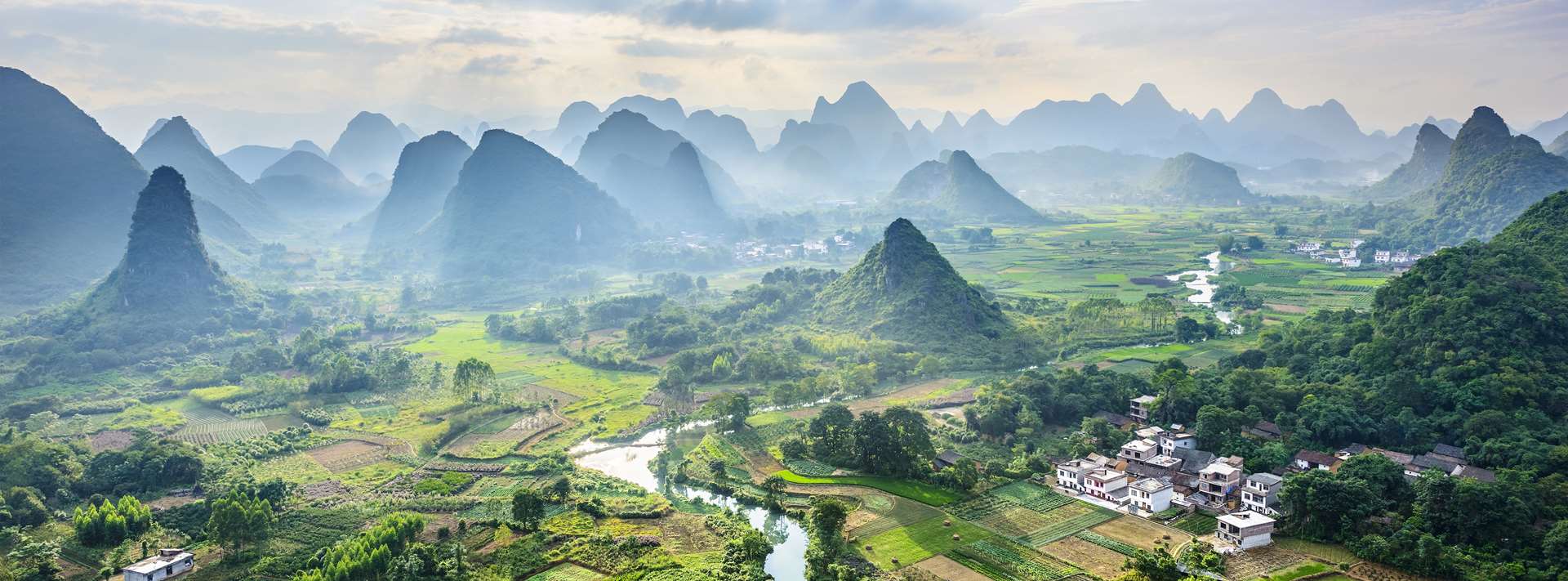Geodesign #1: We have identified eight key defining moments as an introduction to this emerging design movement—from ancient insight to artificial intelligence.
Cosmological compasses helped guide ancient Chinese tribes in harmonizing the design of their tribal settlements. Within these landscapes, these tribes formed an ancient practice of geodesign, known as Feng Shui.
Already 5000 years ago, ancient Chinese tribes performed a holistic assessment of the geological, atmospheric, and cosmic conditions of potential sites for settlement. Torched by floods and mud falls, the tribes turned to the God Da Yu, The Great Yu, to guide them with their choice of settlement. The God applied rules and measures to assess the qi-energies (cosmic condition) and select a safe place for his people, known as Feng Shui.
Feng-Shui: From auspicious sites to interior design
Most of us have come across the word of Feng Shui and can probably draw associations to ideas of balance and harmony or more precisely the concept of Ying and Yang. The practice of Feng Shui implies the established harmony by balancing the opposing Ying and Yang qi energies. Qi are the invisible energy flows that binds all entities and spheres together. Thus, the goal is to build a harmonious relation between the self, humanity, landscapes, Earth and the cosmos through qi. This represents a recurring thought of most of Chinese cosmological schools teaching about the interaction and connection of different spheres (e.g humanity, nature and the cosmos), as opposed to the strict dichotomies drawn by Western cultures.
The goal is to build a harmonious relation between the self, humanity, landscapes, earth and the cosmos through qi
Directly translated Feng Shui means ‘wind’ and ‘water’, hints at the traditional assessment of the wind carving around the mountains, and the flow of the water bodies (geographic and climatic condition), to place tombs in an auspicious site in light of the qi. The perfect spot for a building is hence an equation of a location and axis of time, in which humans relate to the environment. Structures were usually built on high ground or raised platforms; they were oriented in a North/ South fashion with the back of the house facing North as a protection of the northerly winds coming from the mountainous Hill. The practice of Feng Shui determined the selection of the safe places for their settlements, making fields on nourishing soils, diverting water for irrigation, and selecting the right crops for food production, whilst making the land spiritually sacred and meaningful. The tradition of Feng Shui was mostly passed on orally and exercised by Feng Shui Masters. Later, several techniques were developed and manuals were written to practice Feng Shui. Our ancestors complied to the Feng Shui principles to design the most harmonious and desirable landscape for all entities to prosper.
Today we find Feng Shui mainly applied in architectural design, interior design, medicine, gardening, real estate, work environment and now even remote-sensing and modern landscape assessment. The ancient knowledge of applying Feng Shui in a landscape assessment provided important learning lessons to contemporary designers: Feng Shui can expand our knowledge on site selection to establish strategies against natural hazards. It emphasizes horizontal spatial analysis of landforms and highlights the interconnectedness of the whole system.
However, this draws importance to the vernacular aspects of landscapes in which geodesigners have to be able to speak the language of the people of Earth.
While Feng Shui provides substantial insight into landscapes, the ancient knowledge that informed Feng Shui is based on the cultural Chinese landscapes that can merely serve as clues in other parts of the world. However, this draws importance to the vernacular aspects of landscapes in which geodesigners have to be able to speak the language of the people of Earth.
From ancient insight to artificial intelligence
Beyond the local value of Feng Shui for landscape assessment, the international urgency of increasing temperatures, depleting resources, degrading landscapes, have led scientists to rediscover ancient practices including the traditional application of Feng Shui applied to larger scales. As such, Feng Shui has been explored in the context of systems thinking and complexity science.
One of the core principles of the Feng Shui philosophy is blurring the lines between the different scales connecting the individual to regional landscapes and the planetary scale and cosmos. We cannot fully understand any of the agents or systems without realizing how one system is embedded into a larger system and how they evolve as related systems that are influencing each other. Put forth by systems thinking and Feng Shui, all elements are changeable, relational and nonlinear.
The practise of Feng Shui then integrates a variety of data into one belief system. In light of the new big data era, Feng-Shui might provide a clue on how artificial intelligence and big data analytics can build large amounts of variables and inputs into one algorithm. These outputs can holistically assess and inform the design of our future geoscapes, and help us in harmonizing ourselves with our landscapes for a desirable future.
In light of the new big data era, Feng-Shui might provide a clue on how artificial intelligence and big data analytics can build large amounts of variables and inputs into one algorithm.
Yet, often technologies and algorithms speak the language of its programmers, and not the language of the people that live in the landscapes. We wonder to what extent can the ancient teachings of Feng Shui be revived, to play a role in designing the algorithms with which we interact and shape the planet?

Share your thoughts and join the technology debate!
Be the first to comment